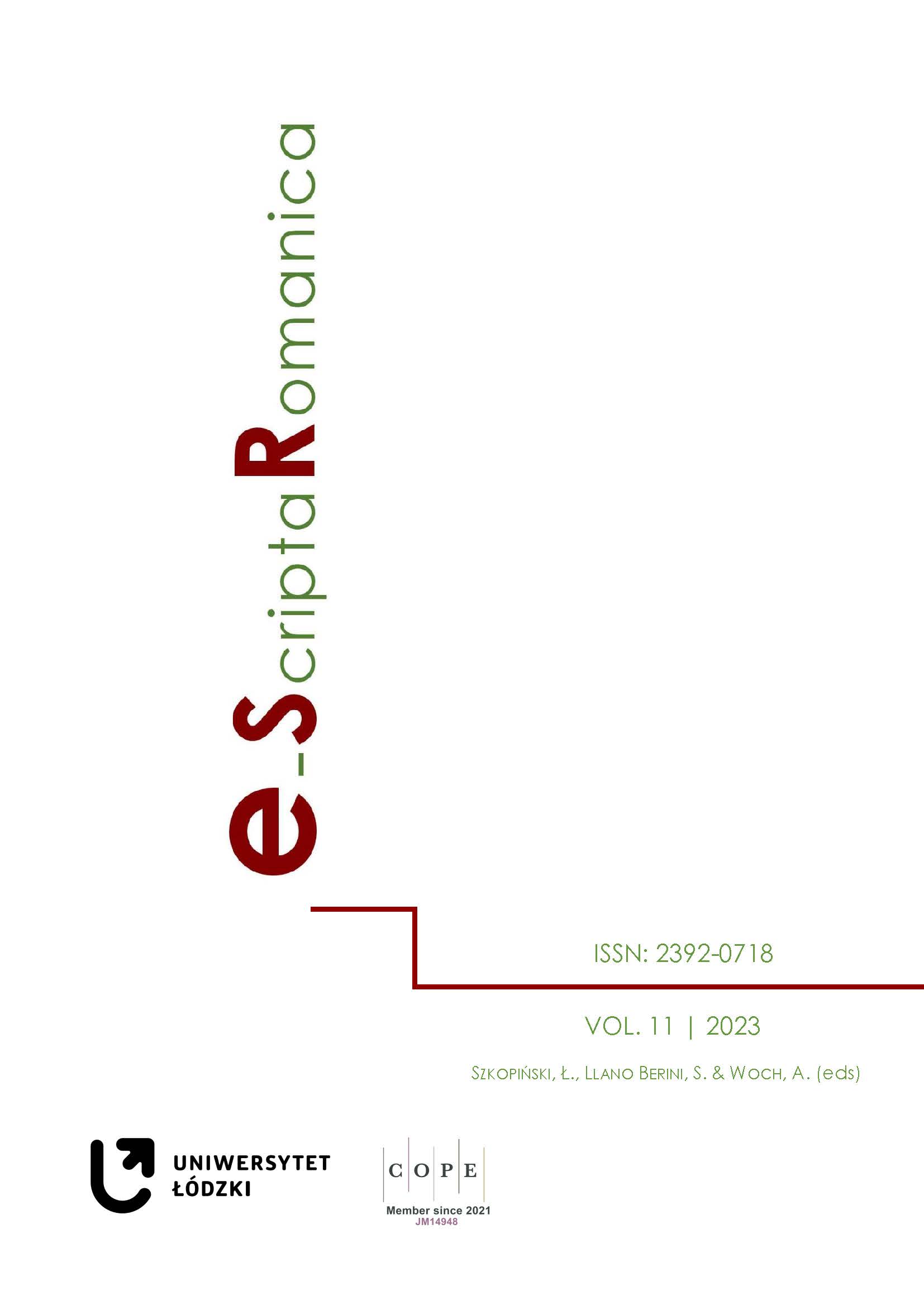Francesco Petrarca: a work, a novel
DOI:
https://doi.org/10.18778/2392-0718.11.07Keywords:
Petrarca, text, novel, archetype, systemAbstract
This article aims to propose the need to approach Francesco Petrarca's Opera Omnia as a single text, fragmented into different individual works. I will demonstrate that its unity is not in extratextual, historical or biographical elements, but in the same poetic form, since the coherence that governs the structure is above all artistic. Moreover, such a form has to be read and considered as a novel. To define this text and justify the proposed choice, I will resort to the teaching of some renowned theorists and critics of contemporary literature because it is the poet himself who allows to refer to his work from an ever-new present. If it is true that Petrarca is a classical author, since he places himself in that rhetorical and poetic tradition, from there he addresses not only his contemporaries, but also ad posteros, which makes it possible to consider him ancient as well as contemporary, and as such it is possible to analyze him. In addition, if it is true that a classic is an author whose work never finishes saying what it has to say, the passage of time cannot be a penalty, but a resource with which his word lives in a constant present and that is why it is possible to read under a current hermeneutic lens.
References
ARIANI, M. (2021). Petrarca. Roma: Salerno.
Google Scholar
BARTHES, R. (1997). Barthes por Barthes. Caracas: Monte Ávila Editores Latinoamericana.
Google Scholar
BETTARINI, R. (2005). Introduzione. In Petrarca, F., Canzoniere. Torino: Einaudi.
Google Scholar
BOSCO, U. (1968). Francesco Petrarca. Bari: Laterza.
Google Scholar
CALVINO, I. (1994). Por qué leer los clásicos. México, D.F.: Tusquets.
Google Scholar
CASADEI, A. (2018). Biologia della letteratura. Milano: Il Saggiatore.
Google Scholar
CORTI, M. (1976). Principi della comunicazione letteraria. Milano: Bompiani.
Google Scholar
DELEUZE, G. (2005). La isla desierta. Valencia: Pre-Textos.
Google Scholar
DOODY, M. (1997). The true story of the novel. New Brunswick (NJ): Rutgers University Press.
Google Scholar
EAGLETON, T. (2013). El acontecimiento de la literatura. Barcelona: Ediciones Península.
Google Scholar
FEDI, R. (1975). Francesco Petrarca. Firenze: La Nuova Italia editrice.
Google Scholar
LOTMAN, Y. (1982). La estructura del texto artístico. Madrid: Ediciones Istmo.
Google Scholar
MORANTE, E. (1987). Pro o contro la bomba atomica. Milano: Adelphi.
Google Scholar
MUKAROVSKY, J. (1977). Escritos de estética y semiótica del arte. Barcelona: Editorial Gustavo Gili.
Google Scholar
POMILIO, M. (2016). Petrarca e l’idea di poesia. Roma: Edizioni Studium.
Google Scholar
QUAGLIO, A. E. (1967). Francesco Petrarca. Milano: Garzanti.
Google Scholar
RICO, F. (1967). Petrarca o de las perplejidades de la crítica. Cuadernos Hispanoamericanos, n. 172.
Google Scholar
RICO, F. (1976). «Rime sparse», «Rerum vulgarium fragmenta». Para el título y el primer soneto del «Canzoniere». Medioevo Romanzo, III, pp. 101-138.
Google Scholar
RICO, F. (2003). Il nucleo della Posteritati (e le autobiografie di Petrarca). In BERRA, C. (ed.), Motivi e forme delle «Familiari» di Francesco Petrarca. VII Convegno di studi di Lingua e letteratura italiana. Gargnano del Garda, 2-5 ottobre 2002. Milano: «Cisalpino» Istituto Editoriale Universitario-Università degli Studi di Milano-Facoltà di Lettere e Filosofia (Quaderni di Acme, 57).
Google Scholar
RICOEUR, P. (2002). Del texto a la acción. México D.F.: Fondo de Cultura Económica.
Google Scholar
SANTAGATA, M. (2011). Introduzione. In PETRARCA, F., Canzoniere. Milano: Mondadori.
Google Scholar
SAPEGNO, N. (1955). Il Trecento. Milano: Vallardi.
Google Scholar
SEGRE, C. (1985). Principios de análisis del texto literario. Barcelona: Editorial Crítica.
Google Scholar
TONELLI, N. (2017). Leggere il Canzoniere. Bologna: Il Mulino.
Google Scholar
Downloads
Published
How to Cite
Issue
Section
License

This work is licensed under a Creative Commons Attribution-NonCommercial-NoDerivatives 4.0 International License.










